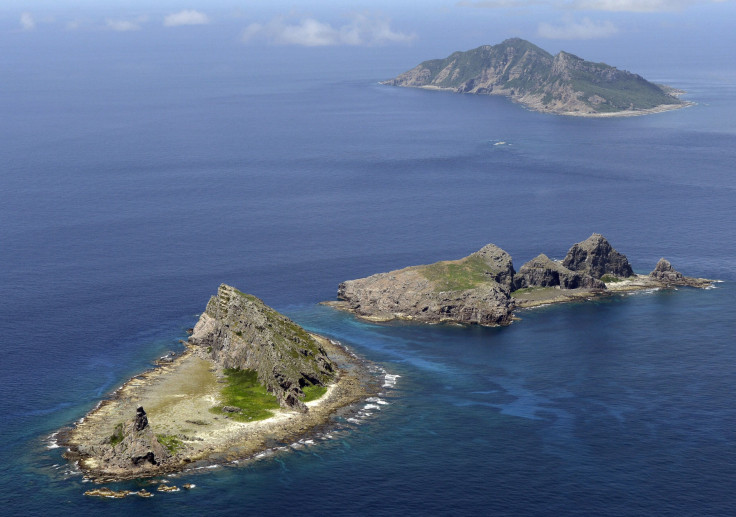China Signals Resolve On Senkakus Dispute: Sends Warship To 'Watch' Russian Frigate
KEY POINTS
- The Russian vessel appears to have entered the zone to avoid a typhoon
- Some believe the Russian ship’s presence was to send a message to Tokyo
- Analysts said the incident "had nothing to do" with China-Russia cooperation
China has reportedly sent a frigate to "chase away" a Russian warship hovering outside the disputed Senkaku Islands in the East China Sea. The move hints at Beijing's resolve to claim its right over the Tokyo-controlled islands, called Diaoyu Islands in China.
According to the Japanese Defense Ministry, the Chinese frigate sailed in the so-called contiguous zone of Senkakus on Monday for about six minutes, chasing a Russian frigate that entered the waters, according to Kyodo News.
Japan said the Russian vessel stayed in the waters for over an hour, and appears to have done so to avoid a typhoon. However, China's actions of chasing away the Russian vessel by "making it appear as if it were patrolling around its own territory" was to demonstrate its territorial claim. This move "unilaterally heightens tensions" and has created a "seriously concerning situation," the Japanese ministry added.
Tokyo has already registered its protest as Japanese Senior Deputy Foreign Minister Shigeo Yamada contacted Chinese Ambassador to Japan Kong Xuanyou by phone, expressing "grave concern" over the incident.
Though Tokyo called on Moscow to take an "appropriate response," it stopped short of protesting to Russia, given that the country does not lay claims to the Senkakus and because the vessel was only inside the contiguous zone to avoid the typhoon.
Meanwhile, there are apprehensions that the Russian vessel's presence was a joint move by China and Russia to corner Japan over the Senkakus issue.
However, a report by South China Morning Post, quoting analysts, said Monday’s incident "had nothing to do" with China-Russia cooperation.
"The People’s Liberation Army didn’t send any warships to form a joint flotilla with any Russian warships this time," Zhou Chenming, a researcher at the Yuan Wang military science and technology institute, told the news outlet. "The Russian warship was a foreign vessel intruding into Diaoyu waters, so the Chinese frigate needed to intercept it and keep watch. The PLA Navy takes the same approach in dealing with all foreign vessels," he added.
He said the interception was designed to prevent misunderstanding and misjudgment because the "Russian warship was supposed to alert their PLA counterpart if it was going to sail into the sensitive waters."
Some analysts believe Russia and China were indeed colluding, considering the joint exercises conducted by the countries recently near Japan's shores.
According to Ni Lexiong, from the department of political science at Shanghai University of Political Science and Law, a Russian warship’s presence was meant to send a message to Tokyo. "Whether the Russian warship was intentionally intruding into Diaoyu waters or not this time, it has already sent a message to Tokyo: you are now the common enemy of Beijing and Moscow," Ni told South China Morning Post.

© Copyright IBTimes 2024. All rights reserved.




















